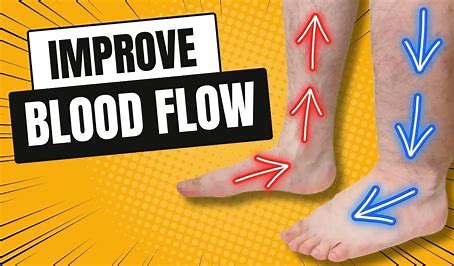Poor blood circulation in the legs can lead to discomfort, swelling, numbness, and even serious health issues like varicose veins or deep vein thrombosis. Improving circulation is essential for overall leg health, mobility, and well-being. This article provides detailed, research-backed steps to enhance blood flow in your legs naturally and effectively.
Why Is Good Blood Circulation in Legs Important?
Blood carries oxygen and nutrients to your tissues and removes waste products. Poor circulation can cause:
- Leg pain and cramps
- Swelling and heaviness
- Numbness or tingling sensations
- Skin discoloration and ulcers in severe cases
Improving circulation helps prevent these issues and supports faster healing.
Step 1: Engage in Regular Physical Activity
Exercise is one of the most effective ways to boost blood flow.
- Walking: Walking promotes calf muscle movement which pumps blood back toward the heart. Aim for at least 30 minutes daily.
- Leg stretches and ankle rotations: Simple movements increase circulation and flexibility.
- Swimming and cycling: Low-impact exercises that enhance circulation without stressing joints.
Consistency is key. I found that even short, regular walks improve leg comfort significantly.
Step 2: Elevate Your Legs
Elevating legs above heart level encourages venous return.
- Lie down and prop your legs on pillows or an ottoman for 15-20 minutes multiple times a day.
- This reduces swelling and eases blood flow back to the heart.
Step 3: Wear Compression Stockings
Compression stockings apply gentle pressure to your legs.
- They prevent blood pooling and help veins push blood upwards.
- Consult with a healthcare provider for proper fitting and compression level.
- Wearing them during prolonged sitting or standing can prevent circulation problems.
Step 4: Maintain a Healthy Weight and Balanced Diet
Excess weight increases pressure on leg veins, impairing circulation.
- Focus on a diet rich in fruits, vegetables, whole grains, and lean proteins.
- Reduce salt intake to prevent fluid retention and swelling.
- Foods rich in omega-3 fatty acids (like salmon) and antioxidants (like berries) support vascular health.
Step 5: Stay Hydrated
Proper hydration improves blood viscosity and flow.
- Drink at least 8 glasses of water daily unless otherwise advised by your doctor.
- Avoid excessive alcohol and caffeine, which can dehydrate you.
Step 6: Avoid Prolonged Sitting or Standing
Long periods without movement reduce circulation.
- Take breaks every hour to stand, walk, or stretch your legs.
- If your job requires sitting, try leg lifts or ankle rotations at your desk.
Step 7: Quit Smoking
Smoking damages blood vessels and impairs circulation.
- Quitting smoking improves vascular function and reduces risk of peripheral artery disease.
Step 8: Massage Your Legs
Massaging stimulates blood flow and relaxes muscles.
- Use gentle upward strokes from ankles to thighs.
- You can do self-massage or see a professional.
Step 9: Manage Underlying Health Conditions
Conditions like diabetes, high blood pressure, and high cholesterol affect circulation.
- Follow your doctor’s advice to control these conditions.
- Regular checkups can catch circulation issues early.
Step 10: Consider Supplements After Consulting Your Doctor
Certain supplements may support circulation, such as:
- Vitamin E and C (antioxidants)
- Ginkgo biloba
- Horse chestnut extract (used for vein health)
Always consult a healthcare professional before starting supplements.
Personal Experience and Final Advice
Incorporating daily walks, leg elevation, and wearing compression socks made a notable difference in my leg comfort over a few weeks. The key is consistency and listening to your body.
If symptoms like persistent swelling, pain, or skin changes occur, seek medical advice promptly.
Conclusion
Improving blood circulation in your legs involves lifestyle changes like exercise, hydration, diet, and avoiding long immobility periods. Using supportive tools like compression stockings and managing health conditions further enhances circulation. Follow these steps consistently for healthier legs and better overall wellness.





